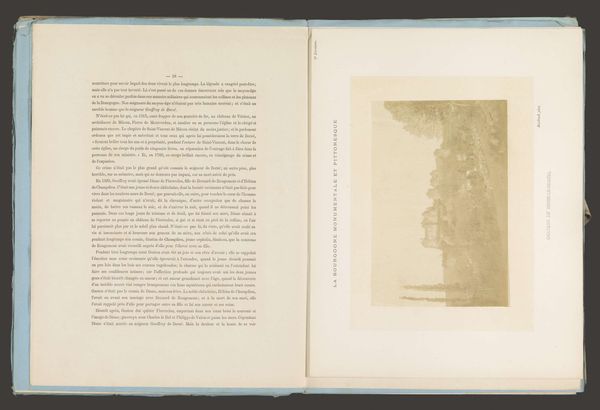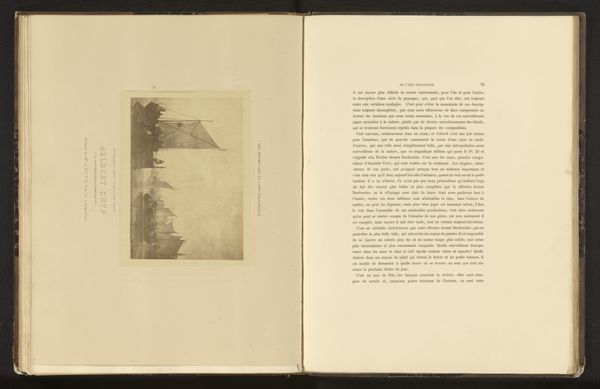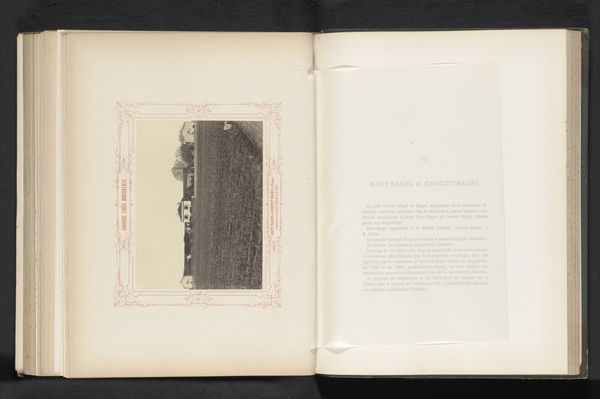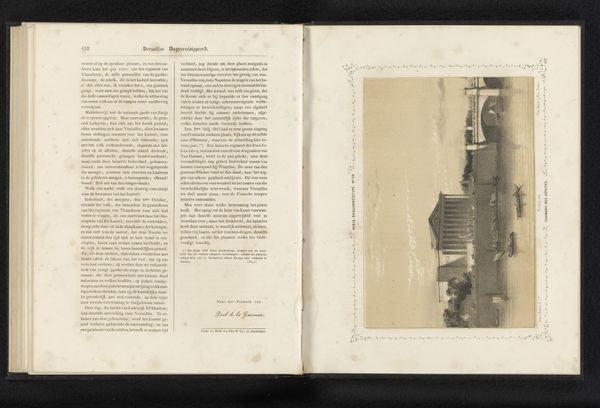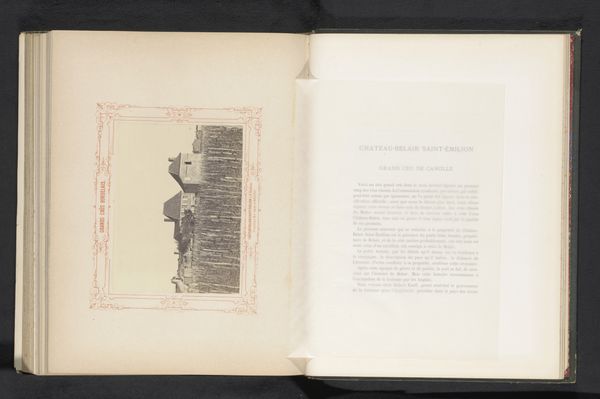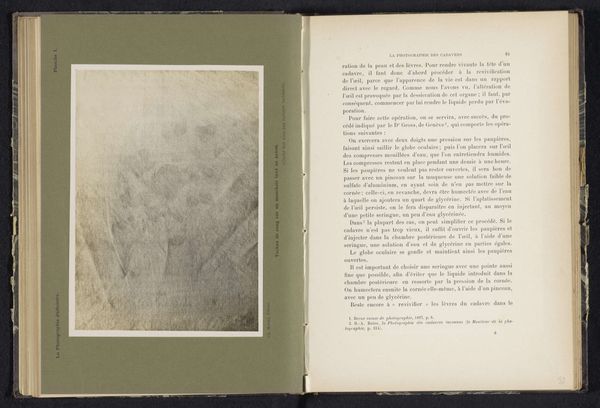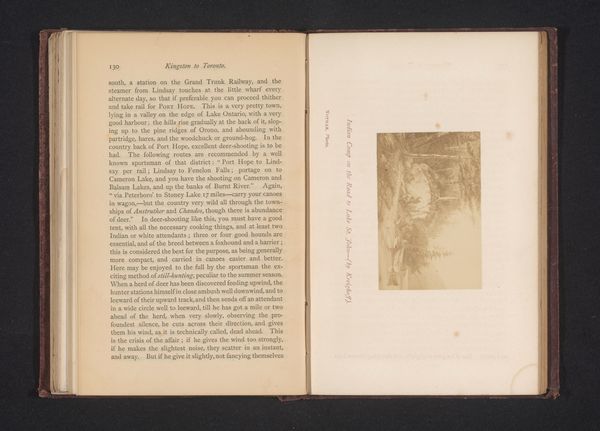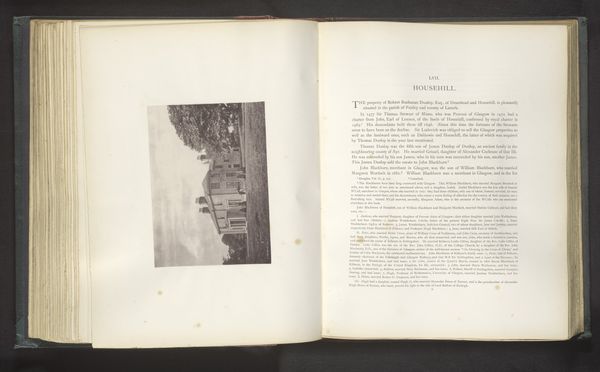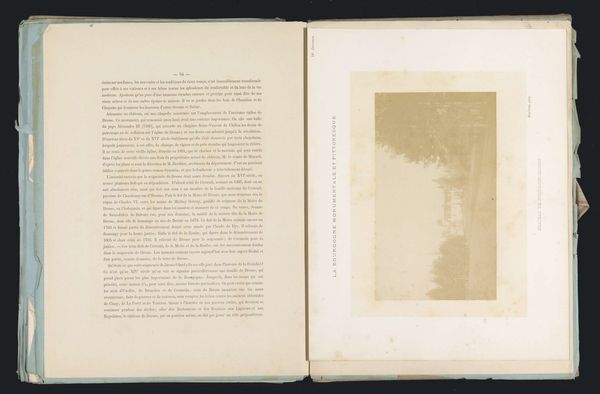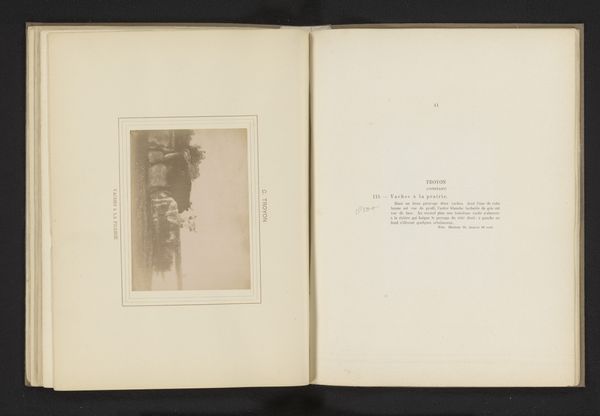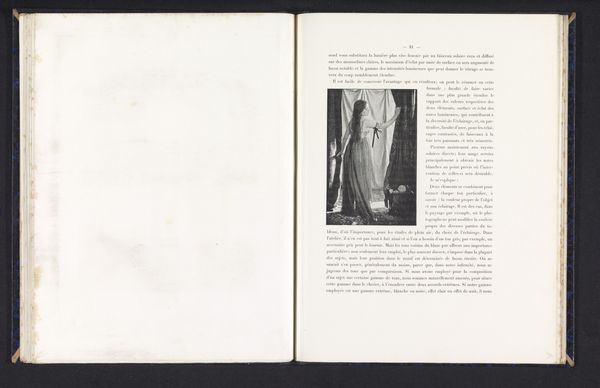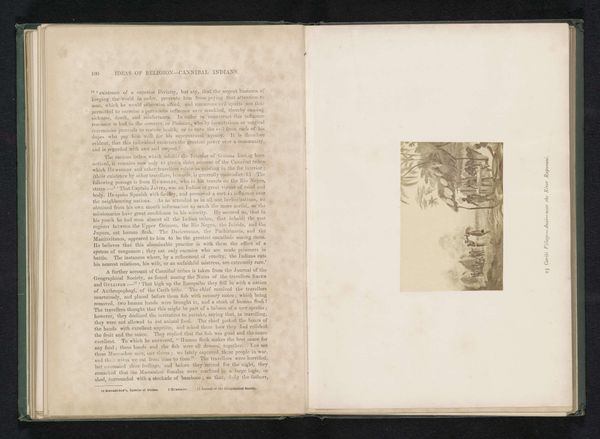
print, photography, engraving
#
portrait
# print
#
photography
#
academic-art
#
engraving
Dimensions: height 206 mm, width 111 mm
Copyright: Rijks Museum: Open Domain
Curator: This image reproduces A. Boulland's rendering of the "Statue of Jean-Baptiste Greuze in Tournus," a printed work from before 1873. What strikes you first about this depiction? Editor: The stark formality of the statue really grabs my attention. The artist is centered, rigidly posed, and idealized – but captured with soft gradations. It feels posed and grand but also quiet and contemplative. Curator: That academic polish absolutely speaks to the social function of memorializing Greuze, the famous painter of genre scenes. Tournus, his birthplace, claims him as a cultural hero. Boulland's print thus participates in constructing that regional identity. Editor: I agree, but what is intriguing from a formal standpoint is how the monochromatic palette impacts our perception. It flattens the depth, reducing it almost to a study in planar relationships rather than pure sculpture. Curator: Right, and photography was itself still gaining legitimacy. The choice of this medium also indicates the era's desire to document and disseminate knowledge. We have to also understand this print not just as an image of the statue, but an indexical marker within a cultural publication designed to educate. Editor: I would add that the play of light, as recorded photographically and reproduced as print, contributes a tonal range adding dimensionality that softens an otherwise severe commemorative object. See how that delicate treatment enhances its humane qualities? Curator: Yes, it also subtly hints at the shift in art appreciation during the mid-19th century as the artist becomes seen as an individual, rather than as strictly part of a movement. We're entering into new territories about the cult of artistic personality here. Editor: Indeed. It’s striking how even through a photographic filter and reproduced on paper, you can perceive both strength of character and that prevailing late-neoclassical pursuit of ideal human form. Thanks to that blend, the artist comes alive. Curator: I found thinking about the distribution of imagery, like this one, to really recontextualize my understanding of Boulland and Greuze's place in that visual landscape. Editor: For me, I'm left appreciating how form can reveal meaning even in reproduced and seemingly detached depictions.
Comments
No comments
Be the first to comment and join the conversation on the ultimate creative platform.
